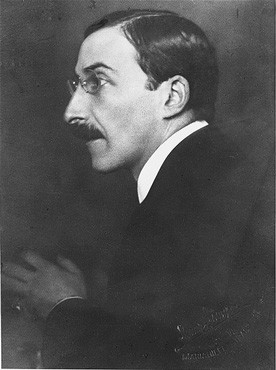
Stefan Zweig
In 1933, Nazi students at more than 30 German universities pillaged libraries in search of books they considered to be "un-German." Among the literary and political writings they threw into the flames were the works of Stefan Zweig.
Excerpt
But one who understands will not judge, and will have no pride. Before him I shall not be ashamed. Whoever has found himself can never again lose anything in this world. He who has grasped the human in himself understands all mankind.
—Phantastische Nacht (Transfiguration) in Amok, Stefan Zweig, 1922
Which of Stefan Zweig's Works were Burned?
All works published before May 1933
Who was Stefan Zweig?
Stefan Zweig (1881–1942) was born to a prosperous Jewish family in Vienna, Austria. During World War I, he wrote the influential anti-war tragedy Jeremias. This 1917 work was an unsparing indictment of an insane war. A prolific author, Zweig wrote essays and plays, but it was his biographies of historical and cultural figures that made him one of the most popular writers of the interwar period. His fame also rested on a series of psychological short stories and novels. Zweig was a generally apolitical man whose writing reflected his sensitivity to man's struggles. The Nazis burned all of his works including Jeremias, for its indictment of war.
After an Austrian police raid of his house in 1934 and the forced closing of the Richard Strauss opera for which he had written the libretto, Zweig emigrated to England. There he continued to write in protest of the Nazi regime. He eventually settled in Brazil. In despair over the fate of Europe, Zweig committed suicide with his wife Elisabeth in 1942.
Critical Thinking Questions
How did the German public react to the book burnings? What were some of the reactions outside of Germany?
Why do oppressive regimes promote or support censorship and book burning? How might this be a warning sign of mass atrocity?

